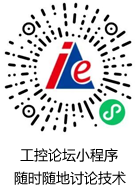P-NET系列讲座(八):第8层-信道结构 点击:1841 | 回复:0
发表于:2002-04-25 13:54:00
楼主
“Layer 8”: P-NET Channel Structure
--------------------------------------------------------------------------------
Typically, a P-NET Fieldbus device is a sensor, an actuator or an interface module. It can relate to one or more process signals, i.e. a digital output or an analog input. Each process signal is associated with additional information, apart from just the state or the value of the signal. These variables, which are related to the process signal, deal with specific functions for configuration, conversion, scaling, filtering, error messages etc.
A Channel: Digital I/O In P-NET, this collection of related variables and functions for a single process signal is regarded as a Process Object, and is called a Channel.
A Channel contains all the necessary data to support the required control functions for the process object. It also includes support for maintenance and technical management of the plant equipment.
A Channel is structured as 16 registers, each having their own relative logical addresses, called SOFTWIRE numbers (SWNo).
These 16 variables or constants within a Channel, can be of any type, including complex, and can be located in different memory technologies.
In order to give a specific example of a standard interface Channel, a Digital I/O channel is illustrated in fig. 6.


热门招聘
相关主题
- 使用WinCC实现远程网络IO控制...
 [9007]
[9007] - 那位高人明白“DC特性”指的是...
 [2411]
[2411] - 求助:关于模拟信号转Modbus?...
 [1543]
[1543] - 在PCS7 V7.0 SP2下安装中央归...
 [1455]
[1455] - 现场总线型变送器的特点及应...
 [5834]
[5834] - 我想学习现场总线,不知道哪种...
 [1728]
[1728] - 基于C#的CAN总线访真
 [1609]
[1609] - profibus通信控制器简介-asp...
 [2210]
[2210] - 求助:DEVICENET通讯故障解决...
 [2286]
[2286] - spc3
 [1399]
[1399]

官方公众号

智造工程师
-

 客服
客服

-

 小程序
小程序

-

 公众号
公众号

















 工控网智造工程师好文精选
工控网智造工程师好文精选
